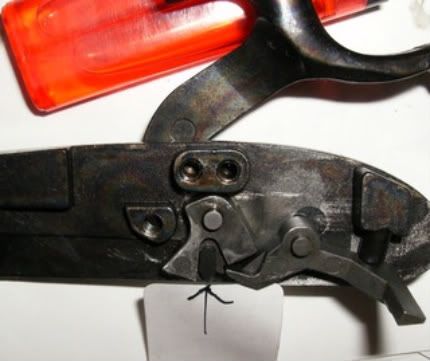I just purchased a used Lyman Great Plains rifle that is rather old and am in the process of restoring it. One mechanical issue that has presented itself is that in bringing the lock to full cock, there is a click about half way back before reaching full cock. There's no variation in motion or resistance with the click, and it has no relation to the half cock position.
Is there a way to address this, or this something that has come up in other GPR's? It's not an issue of function really, but I do want to understand the function and making of the rifle. I have no experience assembling or disassembling the rifles mechanics, so I wanted to inquire with the more experienced first.
Is there a way to address this, or this something that has come up in other GPR's? It's not an issue of function really, but I do want to understand the function and making of the rifle. I have no experience assembling or disassembling the rifles mechanics, so I wanted to inquire with the more experienced first.





